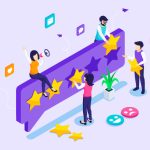Getting to know the people you want to reach is essential for any content marketing plan that hits the mark. When you take the time to dig into who your audience is and what they care about, you can shape your messages to connect with them on a deeper level. This approach doesn’t just make your content more relevant but boosts how much people interact with it and how often they take the action you’re hoping for. Let’s dive into why getting to know your audience is essential for content marketing. We’ll look at how finding out who they are, from age to interests and what they do, can give you the clues you need to create and share content that they’ll find valuable.
Understanding Your Target Audience
Knowing who you’re talking to is crucial in content marketing. If your great content isn’t reaching the right people, you might need to rethink your strategy. Let’s explore why it’s essential to understand your target audience and how you can ensure your content connects with them.
Think of your target audience as the group most likely to be interested in what you offer. When you know who these people are, you can create content that speaks directly to their needs and interests. This leads to more attention, more purchases, and a profit boost.
Not everyone will want what you’re selling. If you try to appeal to everyone, you’ll probably reach no one. It’s much better to focus on a specific group of people so you can make content that gets their attention and makes a significant impact.
Also, when you understand your target audience, you can use your marketing budget and time more wisely. Marketing can be expensive, so it’s wise to concentrate your efforts on the people most likely to become customers.
If you don’t tailor your content to your target audience, you might as well be throwing your money away. It doesn’t matter how good your content is—if it doesn’t strike a chord with the right audience, it’ll likely be ignored.
Difference Between The Target Audience And Buyer Persona
A target audience is a group you aim your marketing at. It’s a broad category that might include many people based on their likes or behavior. For example, if you sell garden tools, your target audience could be ‘people who garden at home.’
A buyer persona, though, is a more detailed picture of the kind of person you’re trying to reach. It’s like a character representing your ideal customer, made up of accurate information, including their age, job, and problems. For example, you might have a persona like ‘Sally, a 40-year-old who gardens at home and needs tools that last’.
Struggling with Digital marketing? Book Your Free Strategy Session!
- 30-Minutes Session
- Expert Insights
- Data-Driven approach
- Optimized Strategies for Your Goals
Having buyer personas lets you get specific with your marketing. While your target audience gives you a general idea of who to talk to, personas help you zero in and personalize your approach.
Both ideas are linked, but knowing the difference can improve your marketing. Use your target audience to guide your overall strategy and buyer personas to tailor your messages.
How To Define Your Target Audience?
Understanding who is most likely to buy from you is crucial. Start by looking at the people who already do. What do they have in common? This could be anything from age to hobbies. This information is a goldmine because it helps you understand what draws people to your products or services.
Don’t overlook the power of asking questions. Surveys are a fantastic tool. Reach out to both current and potential customers. Find out what they need and what problems they’re trying to solve. Their answers are like pieces of a puzzle that, when put together, will show you a clear picture of your ideal customer.
Researching the market is another crucial step. Look at your competitors. Who are they focusing on? This might highlight a group of people you hadn’t thought to target but who might be interested in what you offer.
With all this information, you can start to build a detailed profile of your target audience. Remember, this isn’t a one-time job. People change, and so will your audience. Keep your finger on the pulse to stay relevant.
Can You Target More Than One Audience?
Yes, you can undoubtedly target your marketing at different groups. Take a skincare company, for example. It might create products for teens who want to clear up their skin and for adults looking for ways to reduce wrinkles.
Each group you target will have its own specific needs and challenges. That’s why crafting messages that speak directly to each group is essential. It’s like having a different conversation with each type of customer.
But be mindful of your resources. Trying to reach multiple audiences means you’ll need a unique approach for each one. This could mean different types of content, marketing strategies, and even using various channels to reach them.
If you have limited resources, it might be wise to start with one audience. Please get to know them well, build a strong foundation, and consider expanding to others when possible. It’s all about making the most impact without spreading yourself too thin.
Types of the Target Audience
When trying to connect with the right people for your product or service, it’s essential to understand the different types of target audiences. This knowledge helps you tailor your marketing efforts for the best results.
Demographic Audiences
Demographic information is like the basic facts about a person. It includes age, gender, income level, education, and marital status. Marketers use these details to create profiles for the customers they want to attract. It’s like sketching your ideal customer—simple but helpful to get started.
Psychographic Audiences
Psychographic details go beyond the basics. They paint a picture of your potential customer’s value, hobbies, and lifestyle choices—you have like adding color to your sketch. By understanding these deeper aspects, you can create marketing messages that resonate on a more personal level.
Behavioral Audiences
Behavioral information is about how people act. It includes their buying habits, loyalty to your brand, and interactions with your products or services. Think of this as watching your sketch come to life. This data is very telling because it’s based on actual actions and decisions, giving clues on better meeting people’s needs.
Combining all three types of audience information can give you a comprehensive picture of your potential customers. It’s like having a full-color portrait with a background story, which can guide you to make smarter marketing decisions.
How to Find Your Target Audience?
Market Research
It would be best to do detective work to get to know your audience. Market research involves gathering information directly from potential customers. You can use surveys to ask them questions about what they like or don’t like. Focus groups are another excellent tool for conversing with a small group of people about your product or service. This direct feedback is gold because it tells exactly what people want and need. By understanding your audience, you can ensure your marketing hits the mark.
Check Your Website Performance
Understanding how your website is doing is crucial for your online success. You can use tools such as Google Analytics to get a clear picture of who’s coming to your site and what they’re doing there. Look at metrics like the bounce rate, which tells you how many people leave your site after viewing just one page. A high bounce rate might suggest that your site isn’t what visitors expected or that it’s not engaging enough. Also, check out the session duration, which is how long people stay on your site. Longer sessions can mean that people are interested in your content and are taking the time to read it.
Use Social Media Analytics
Social media platforms are not just for sharing content; they’re also powerful tools for understanding your audience. Each social media site offers analytics tools that help you see who interacts with your posts. You can find out things like the age range of your followers, which posts get the most likes or shares, and what time of day your audience is most active. This information is gold when it comes to tailoring your social media strategy. By knowing what your audience likes, you can create more of the content they’re interested in and post it when they’re most likely to see it.
Understanding the Customer Journey
Knowing how your customers make their buying decisions is essential for successful marketing. It’s like putting together a puzzle – you must see the whole picture to understand where each piece fits. Customers usually follow a series of steps before they decide to purchase something. These steps might include recognizing their need, researching solutions, comparing options, and finally selecting to buy. By understanding this process, you can create content that addresses their questions and concerns at each stage, helping to move them closer to a purchase.
Struggling with Digital marketing? Book Your Free Strategy Session!
- 30-Minutes Session
- Expert Insights
- Data-Driven approach
- Optimized Strategies for Your Goals
Tailoring Content to Your Audience
The information you share must resonate with the people you’re trying to reach. Think about who your customers are and what they need or worry about. Your content should be like a conversation where you speak directly to them, answer their questions, and offer solutions that make sense for their situations. If your content misses the mark, it won’t matter how good your overall marketing strategy is because it won’t engage the people you want to become your customers.
Content Creation For The Different Parts Of The Funnel
When people just start learning about a topic or problem, you want to catch their interest. Writing simple blog posts that explain the basics or step-by-step guides can help. These pieces should be easily understood and provide valuable information without overwhelming the reader.
As people start thinking about how to solve their problems or fill their needs, they look for options. This is a great time to offer content that compares different solutions. Case studies are also influential because they show real-life examples of how your product or service has helped others.
Finally, when people are ready to make a choice, they want reassurance that they’re making the right one. Sharing customer testimonials can give that confidence boost. Detailed product guides are also helpful here, as they can answer last-minute questions and provide in-depth information about your product’s benefits and features.
Tips From Experts On How To Target The Audience
Experts often point out that your message should be the same no matter where people find you. Whether on social media, your website, or in an email, how you talk about your brand should not change. This helps build trust and makes your brand more memorable.
Another critical advice is to watch what your audience likes and how they behave. People’s preferences can change quickly; what worked yesterday might not work tomorrow. So, it’s crucial to stay flexible and ready to tweak your strategy to keep in tune with your audience’s current needs and interests.
Final Thoughts
Standing out in content marketing is tough, but knowing who you’re talking to can give you a natural edge. It’s all about making content that strikes a chord, earns trust, and brings business. Taking the time to get to know your audience can help you create a content strategy that doesn’t just hit the mark but does so efficiently. When your content speaks directly to what your audience is looking for, it does more than share information—it solves their problems. As things keep changing online, keeping up with your audience’s needs and preferences is a smart move for any content marketer looking to stay on top.



